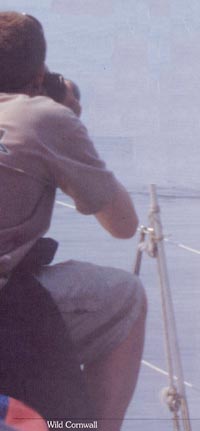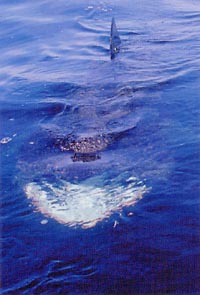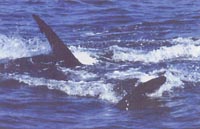Charting the colossal
Colin Speedie reports on an important project which is providing insight into the distribution and behaviour of the second largest fish in the world.
2003 will be the fifth year for the Wildlife Trusts Basking Shark Project, and we have high hopes that it will be a year of vital importance.
The first three years concentrated on the waters between Berry Head (South Devon), and the Isles of Scilly. Using effort corrected line transect surveys, volunteers aboard our 11.7m yacht assisted us in discovering many important facts about the sharks in our waters. During that time we covered a distance of 2,088km and recorded 134 basking shark. The key month for sightings was June, with 48%) of sightings, with July at 24% and August 28% - May, Surprisingly, had no sightings during the surveys.
Areas favoured by Sharks
The major finding, however, was the spatial distribution of the sharks with a marked bias¦ towards the western end of the survey area. 48% of the survey sightings were within a 9 kilometre

radius of the Runnelstone buoy (Gwennap Head), with 32% of sightings within a 9km radius of Lizard Point, 8% between these two points, and the final 12% to the west of Lands End. This firmly establishes West Cornwall as one of the most important sites for the basking shark in the UK.
What is so unique about these areas that makes them so enticing for the sharks? We believe that the most significant factor is that they have a stratification index of 2 or less. This means that water is constantly mixed from seabed to surface, lifting nutrients to the surface and thus encouraging plankton development. This in turn leads to significant numbers of surface sighted sharks throughout the season. Most of these sharks were mature, large animals, and over the years we have recorded significant amounts of what is recognised as courtship behaviour (one or more animals following each other in nose to tail fashion), together with breaching, which is also believed to be linked to social or sexual activity. Clearly then, these are highly

important sites for the species, and are relatively small scale. They are also 'busy' areas with considerable amounts of commercial and leisure craft travelling through them on a regular basis, and collisions with surface sighted sharks have been reported. We are currently working on studies to establish what level of risk exists from this activity and others within these sites.
Photo identification
Other successes have come through our photo-identification studies. Always useful as a long-term research tool, we are now seeing a number of animals returning on a regular (or intermittent) basis. Our research programme now takes us up into the Irish Sea, the Firth of Clyde and the Sea of the Hebrides, where we are training local volunteers to participate in future surveys that will include photo-identification studies. We hope, in time, to learn more about the long-term movements of these fabulous creatures, and even their overall population numbers using this benign research tool.
Additional information:
If you would like to know more about this work, please visit the Project website at www.baskingsharks.co.uk, and if you would like to follow our progress up the west coast of Britain this summer, then you will find a regularly updated section on our activities on The Wildlife Trusts' main website.
Colin Speedie

Photos: Colin Speedie